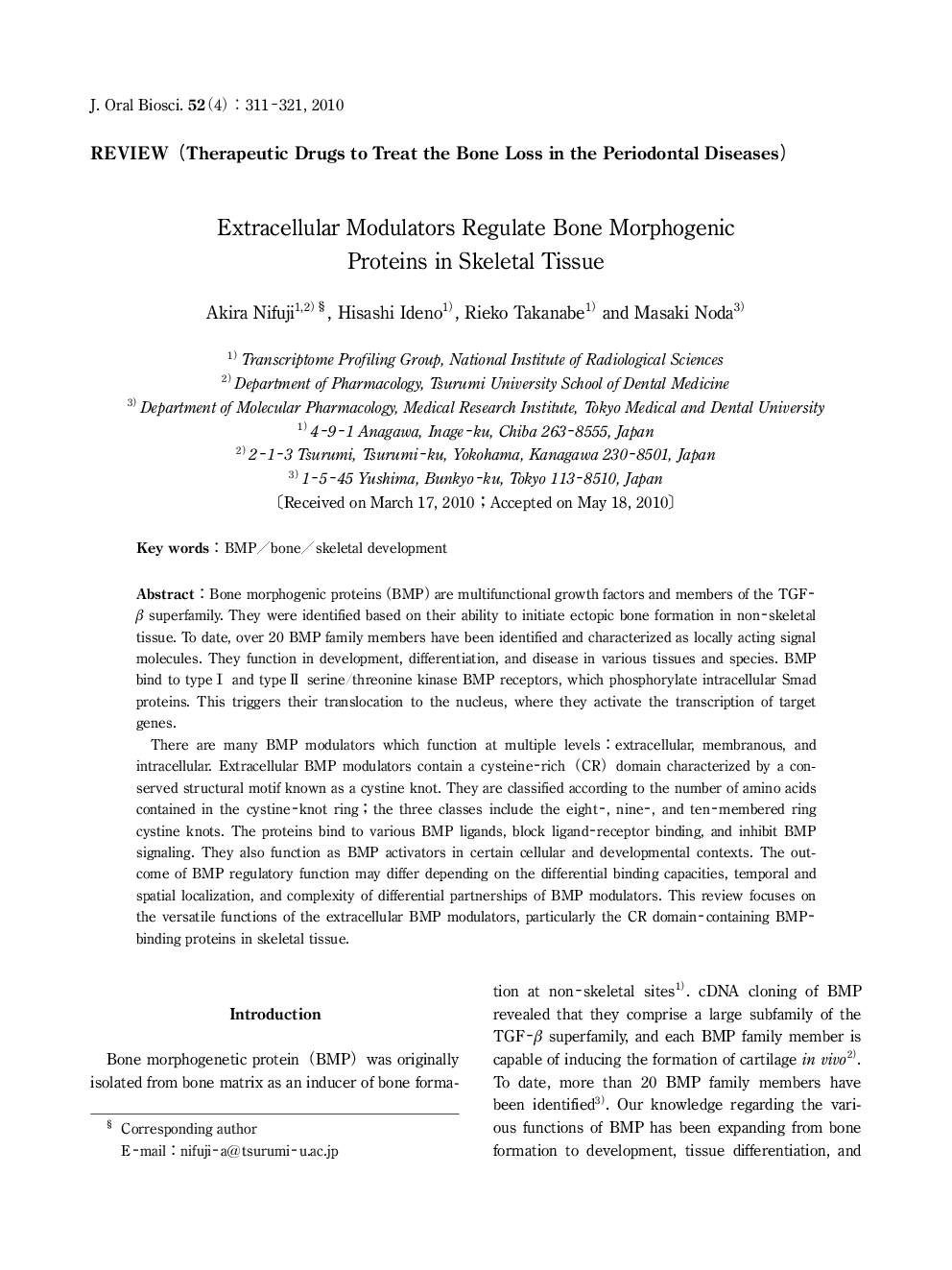| Article ID | Journal | Published Year | Pages | File Type |
|---|---|---|---|---|
| 2776810 | Journal of Oral Biosciences | 2010 | 11 Pages |
Bone morphogenic proteins (BMP) are multifunctional growth factors and members of the TGF-β superfamily. They were identified based on their ability to initiate ectopic bone formation in non-skeletal tissue. To date, over 20 BMP family members have been identified and characterized as locally acting signal molecules. They function in development, differentiation, and disease in various tissues and species. BMP bind to type I and typeII serine/threonine kinase BMP receptors, which phosphorylate intracellular Smad proteins. This triggers their translocation to the nucleus, where they activate the transcription of target genes.There are many BMP modulators which function at multiple levels : extracellular, membranous, and intracellular. Extracellular BMP modulators contain a cysteine-rich (CR) domain characterized by a conserved structural motif known as a cystine knot. They are classified according to the number of amino acids contained in the cystine-knot ring; the three classes include the eight-, nine-, and ten-membered ring cystine knots. The proteins bind to various BMP ligands, block ligand-receptor binding, and inhibit BMP signaling. They also function as BMP activators in certain cellular and developmental contexts. The outcome of BMP regulatory function may differ depending on the differential binding capacities, temporal and spatial localization, and complexity of differential partnerships of BMP modulators. This review focuses on the versatile functions of the extracellular BMP modulators, particularly the CR domain-containing BMP-binding proteins in skeletal tissue.
